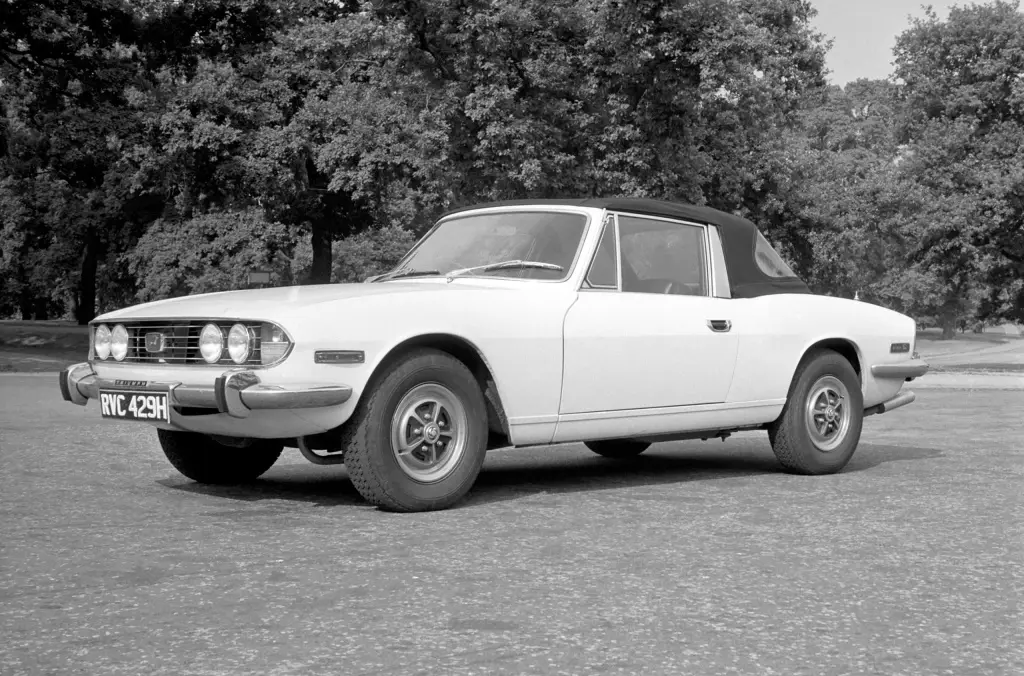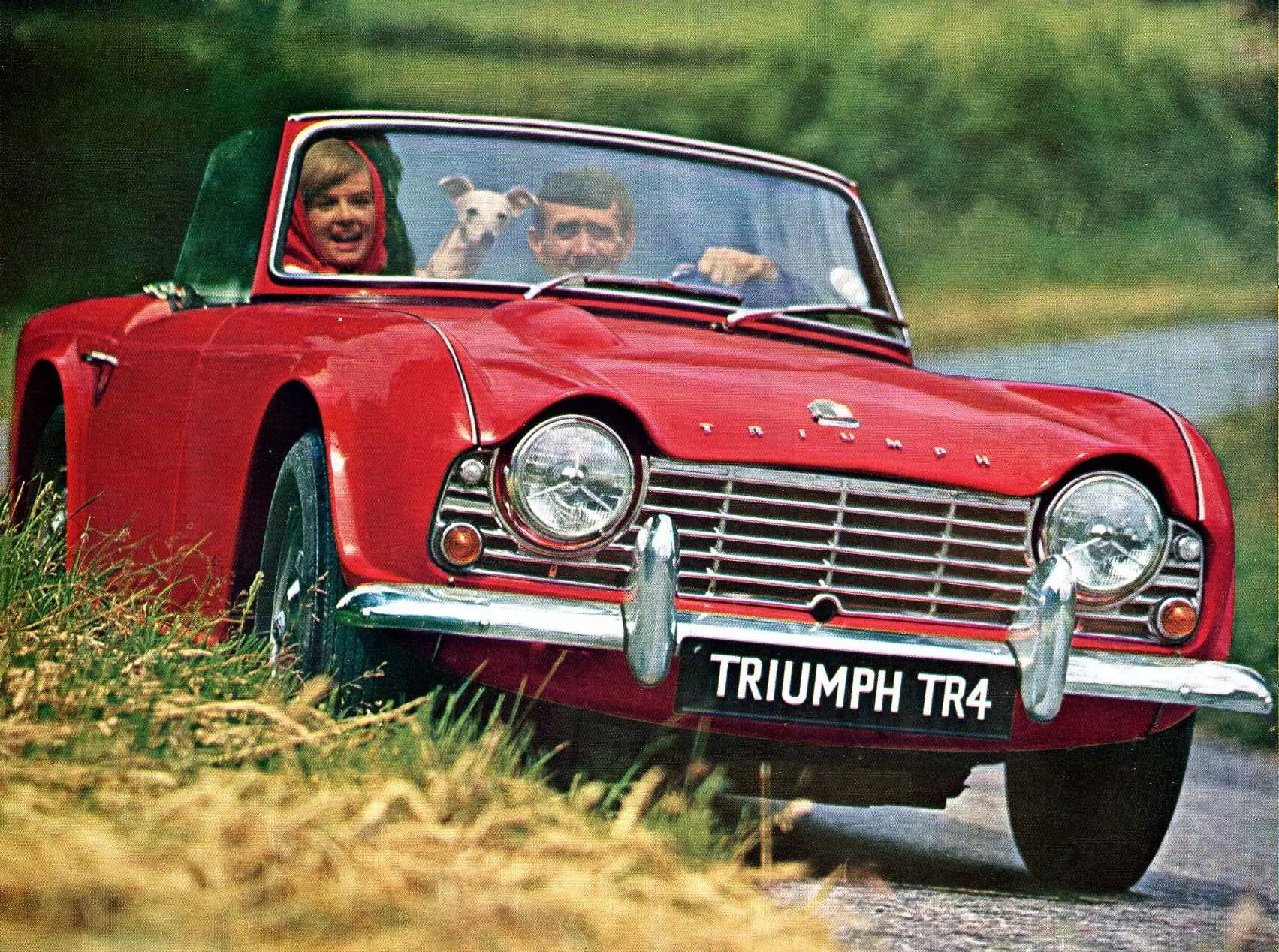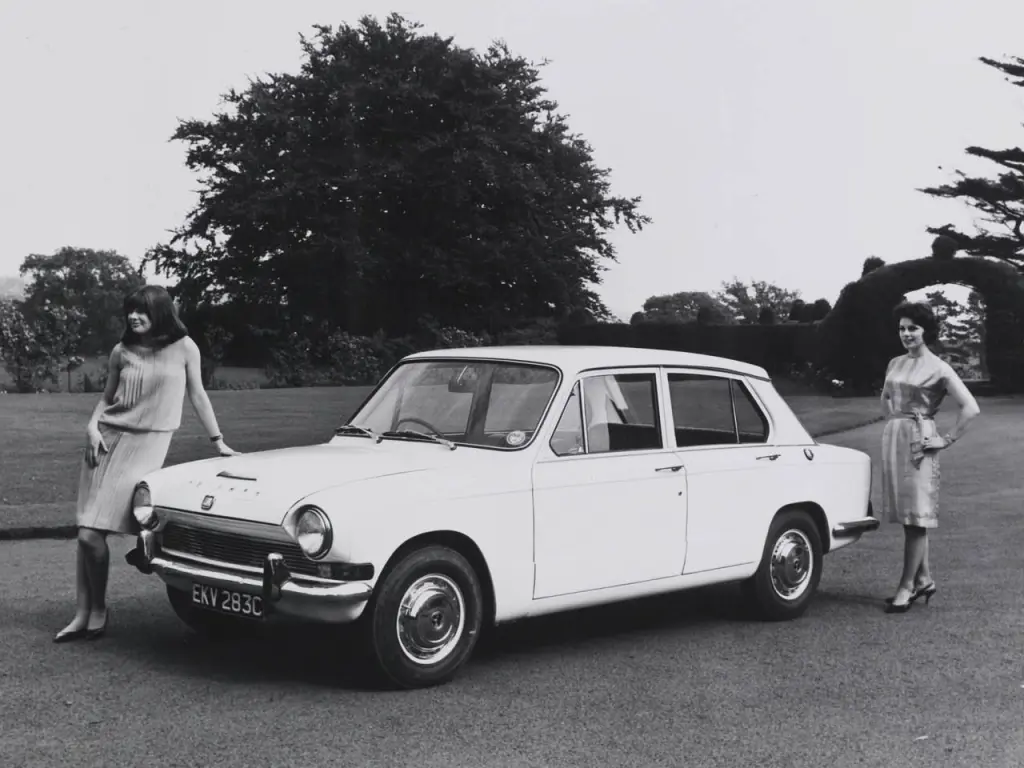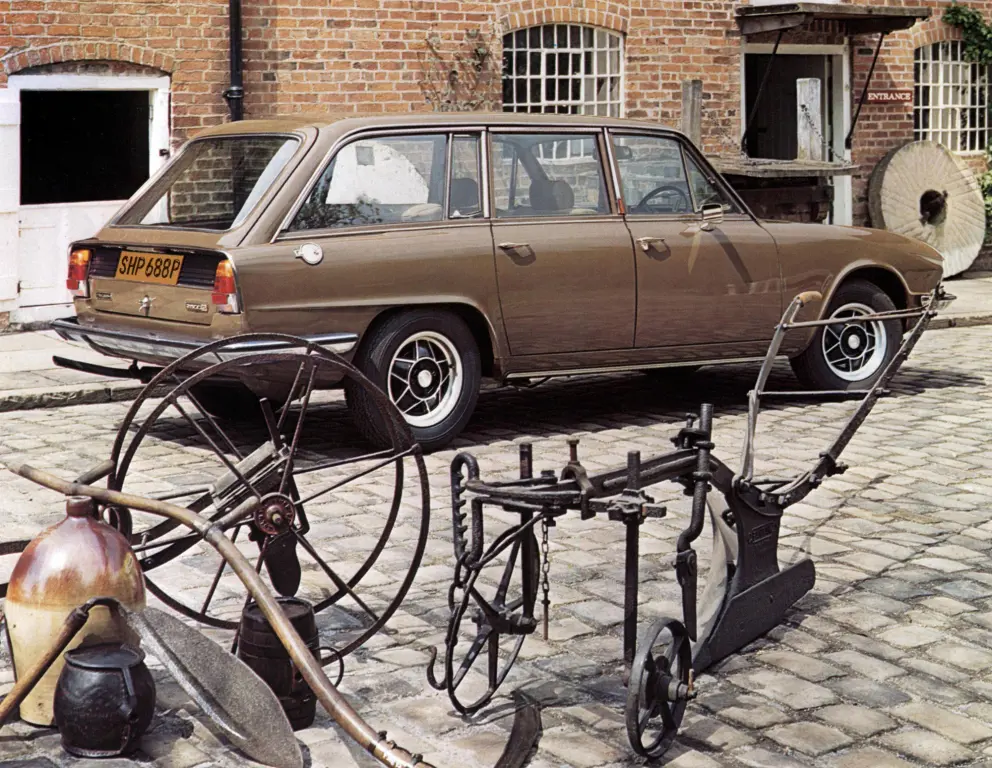TRIUMPH AT 100
28 April 2023
2023 marks 100 years since the first Triumph badged car, the 10/20, left the factory. Selecting one model that encapsulates all the marque’s virtues is mission impossible, so this writer has decided to choose his favourite example from a shortlist of five.

Firstly, here is the small car that made its bow in 1959 at the Albert Hall. The show’s highlight was a team of engineers building a Herald on stage in just four minutes. The 948cc engine and transmission may have been from the outgoing Standard 10, but the rack & pinion steering and the all-independent suspension were radical departures for the company.
Then there was the 25-foot turning circle, for the brochure claimed it possessed a “better lock than a London Taxi”. The sales publicity also boasted, “No words can capture the magic of the Triumph Herald”, as well as posing the question – “Do Men Drive Better Than Women’”. The very 1950s reply was, “Not in the Triumph Herald!”.

Next on my shortlist is the TR4, which Road & Track brilliantly referred to it as a “resounding Triumph”. The ‘Hard Top’ version, with its detachable metal panel between the windshield and the glass rear window frame, predated the Porsche 911 Targa by five years, and Motor Sport stated it boasted a “man-size steering wheel” – the 1960s were another world.
Autocar thought the TR4 would appeal to “a new generation of owners - i.e., those who did not think that open-air motoring was synonymous with discomfort”. However, in case Triumph sports car enthusiasts were concerned that the winding windows and external door handles represented creeping decadence, a heater was an £11 16s extra, and the radiator grille still incorporated a starting handle.

Third is one of Triumph’s most significant post-war models. The 1965 1300 was their first front-wheel drive car and the originator of a complex array of successors, from the Toledos to the Dolomite Sprint. Plus, for £797, the discerning motorist could enjoy the first Triumph to feature their famous circular ‘All Systems Go’ dial of eight warning lamps. To quote Motor Sport 1966, the 1300 was:
certainly top of its class and, with a little further development, should be a very significant car indeed. If it was built abroad and had a foreign-sounding name, you would be loudly proclaiming its many merits.

Fourth is the Grand Tourer, which Triumph believed would be an alternative to “low volume, high-quality British cars which are made to measure or from exotic – though costly – Continental models”. May 1970 saw the press unveiling of the Stag, which Motor later described as “an outstanding car and we should be proud it’s most British”.
Shortly after production ended in 1977, the great motoring writer Graham Robson stated, “What a pity it didn’t have a Mercedes badge or an Alfa Romeo image”– but with the appropriate quality control, the Stag would have required neither. Besides, as the brochure put it, the “sleek body lines will attract attention from passers-by”.

But my choice is the 2500S in Estate form, partially because I have long held a passion for large station wagons and because of its smart, imposing presence. Triumph introduced the ‘S’ dates in 1975 as the final incarnation of the 2000/2500 range, which dated from 1963. It combined the 2,498cc six-cylinder engine in twin SU HS6 carburettor form with alloy wheels, power steering, “Sundym Glass” and overdrive for the manual gearbox versions. The cabin certainly impressed my younger self, as it almost lived up to British Leyland’s hyperbole – “Sit inside a Triumph 2500S and you could well be somewhere else. Some penthouse of unashamed luxury perhaps”.
After the demise of the 2500S in 1977, Triumph never made a similar model, and today the Estate is justifiably much sought-after. It is also very difficult to resist the charms of a car in which even the walnut-veneered facia apparently possessed a “mellow” quality.
But what is your Triumph of choice?
